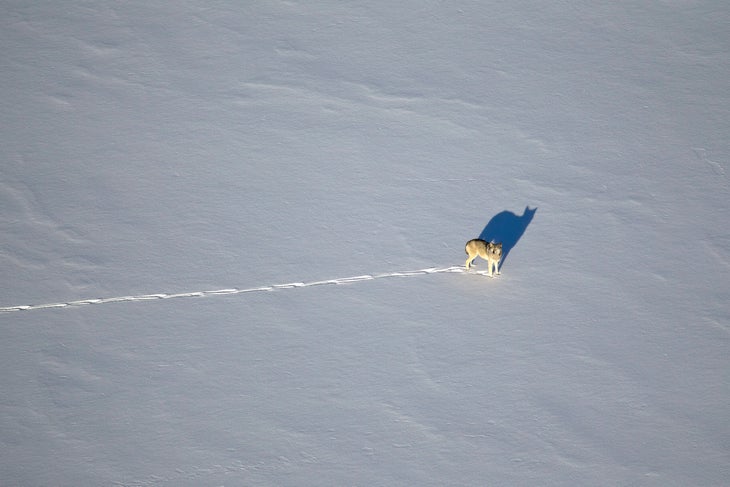Products You May Like
Get full access to Outside Learn, our online education hub featuring in-depth fitness, nutrition, and adventure courses and more than 2,000 instructional videos when you sign up for Outside+
Sign up for Outside+ today.
Eighty years since the gray wolf population was eradicated from Colorado due to the harm they posed to livestock and game, the state is working to restore the wolf population to its natural habitat—an area that encompasses some of Colorado’s major ski resorts, including Vail, Aspen, and Crested Butte.
In 2020, Colorado voters narrowly approved the Gray Wolf Reintroduction Initiative. Also known as Proposition 114, this initiative calls for wolves to be released west of the Continental divide by the end of 2023. The ultimate goal is for Colorado to support a population of at least 200 wolves so the animal can be delisted as endangered. These efforts follow similar efforts to revive wolf populations in Wyoming, Idaho, Montana, New Mexico, and Arizona.
The reintroduction area for wolves was chosen based on a balance of ecological fit (such as habitat and prey availability) for the wolves and an assessment of conflict risk (housing densities, road extents, livestock in the area).

Colorado’s reintroduction area, dubbed the “donut hole” by Colorado Parks and Wildlife (CPW), sits 60 miles from the state’s boundaries with New Mexico, Wyoming, and Utah, with the continental divide forming the Eastern Limit.
But a reintroduction area is not synonymous with a confinement area. Once released, the wolves will be free to wander. Lone wolves are predicted to wander at least 200 miles so it is unlikely they will actually stay concentrated around ski resort areas. In fact, it is likely that the reintroduced wolves will spread out across the state, with some ending up east of the Continental Divide and in the front range.
In a review of case studies across a span of more than 100 years, Mark E. McKnay, author of “A Case History of Wolf-Human Encounters in Alaska and Canada” identifies only 80 cases of wolf-human conflict across Alaska and Canada, which combined, host somewhere between 59,000 and 70,000 wolves. Some of the cases can be attributed to rabid wolves, wolf reactions to humans accompanied by dogs, and wolves acting in self-defense when threatened by humans or accompanied by young.
The general consensus is that wild, healthy wolves do not pose a threat to humans. And people can minimize the risk of wolf-human conflict by practicing the basic Leave No Trace principle of respecting wildlife, which includes avoiding close encounters and not feeding animals.
